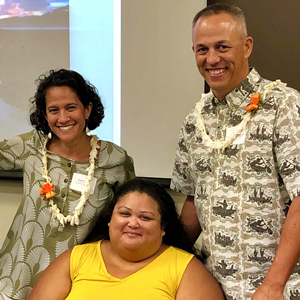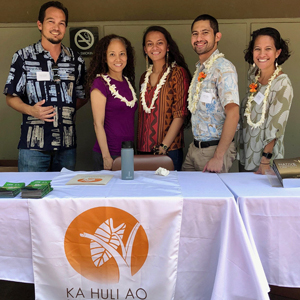

On May 18, more than 90 decision-makers, including several newly appointed members of state and county boards, commissions and councils, received a full day of training on key issues in Native Hawaiian law at the William S. Richardson School of Law at the University of Hawaiʻi at Mānoa.
The training, covering four major legal areas affecting Native Hawaiians, is required for members of designated local boards, commissions and councils as part of Act 169, a state law passed in 2015. The specialized training, conducted by faculty members of the Ka Huli Ao Center for Excellence in Native Hawaiian Law, was developed for recently appointed or elected officials.
Participating in the training were Hawaiʻi County councilmembers and staff, Department of Hawaiian Home Lands commissioners and staff, the staff of boards and commissions, and staff members of state agencies. Funding for the training sessions, which are held twice a year, comes from the Office of Hawaiian Affairs (OHA).
Topics covered included working with Hawaiian communities to preserve and protect ʻāina, historical and cultural context for Native Hawaiian land and resource rights, and Native Hawaiian traditional practices.
Professor Melody Kapilialoha MacKenzie noted that Ka Huli Ao has offered similar training for five years, with hundreds of state and county decision-makers and staff members participating.
“We are very appreciative of the positive response from those attending the training,” she said. “We look forward to continuing to work with OHA to provide this important information to ensure that decisions affecting our natural and cultural resources are made by people who truly understand the law and the impact their decisions have on the Native Hawaiian community and on all in Hawaiʻi.”
For more on the training including a list of presenters and training topics, go the law school’s website.
—By Beverly Creamer

